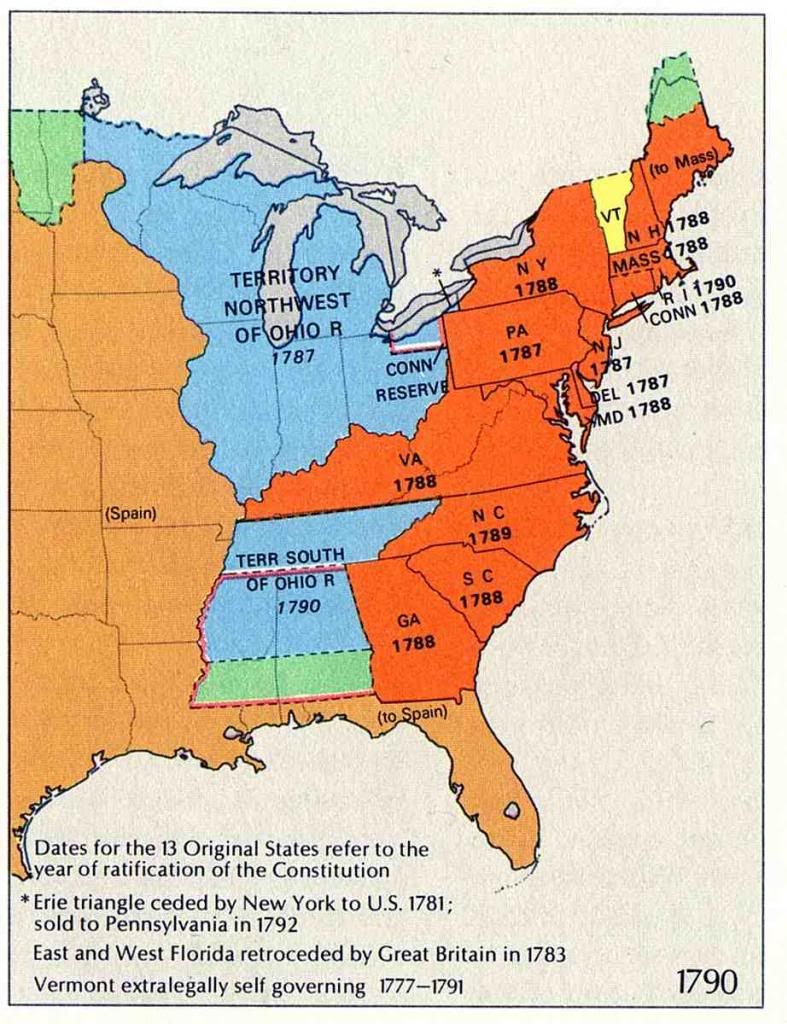How come only the states in the northeast are called New England? Thirteen colonies split off from Great Britain, right?
Right.
But the name “New England” was first used in 1616, and it didn’t expand beyond its region, since the Netherlands was already directly south in New Amsterdam in 1614 and France had Acadia to the north in 1604. Thus Virginians, for example, had no reason to connect themselves to New England as the name of a region.
New World recolonization — descendants of the original colonists were busily becoming smallpox victims from 1492 to roughly 1850 — took about 300 years, and England was one of four actors; the Netherlands claimed primarily the area around the port of New Amsterdam, France took most of east-central Canada down to what’s now Louisiana, and Spain took the western part of the continent.
John Smith named the area New England — because everything was getting named either Place I Am From or New [Place I Am From] — in 1616, and it stuck; many British merchants immigrated there up until the Revolutionary War. The French were busy with their foothold in Canada, where they had sailed in search of China (latitude had not been invented yet*); they discovered beavers and decided that was good enough. And of course the Dutch founded New Amsterdam, and Spain claimed Florida, since you should always look to diversify your land stock portfolio. Great Britain seized most of those lands eventually; Spain settling and losing Mexico and the western half of the U.S. will be the subject of another entry.
Meanwhile, back at the New England Ranch, the colonies of Massachusetts Bay, Plymouth, Providence Plantation, and Connecticut were the sole English-speaking settlements in the region until the Netherlands yielded what would be renamed New York in 1674, since Great Britain beat them in a war and the Netherlands chose to give up New Amsterdam and keep spice-producing lands in Indonesia.
New Hampshire got seeded in 1623, with a few batches of settlers going at once, though none of the colony names survived to become towns. New Jersey didn’t get started until 1665, with Elizabeth. Maryland was settled in 1634 to secure the Delaware region, followed by Pennsylvania in 1684; Delaware split from Pennsylvania in 1701. Vermont was an outgrowth of conflicting claims and settlements from New Hampshire and New York from 1724 to 1763. King Charles II consolidated the villages east of Connecticut into Rhode Island in 1663.
The kings of England changed American colonial boundaries for political or economic reasons. The initial colonies were granted land from eastern to western shore, but the thirteen colonies clung to the coast, since terrible transportation options heavily restricted supplying anything further inland (anyone who’s played Colonization can sympathize). King James II revoked Massachusetts Bay’s charter in 1684 because the Puritans refused to allow the Church of England any establishment**, and flouted colonial trade laws. That led to the Dominion of New England from 1686 to 1689, which combined the colonies from Delaware to Maine into a single unit. It was dissolved when James was deposed and William and Mary took the throne (one sat on the other’s lap, to avoid really nasty hip bruises), and while the other colonies of the actual region of New England returned to their previous forms, Massachusetts Bay expanded to include what is now Maine, Nova Scotia, New Brunswick, and chunks of every other neighboring state.
So the residents of the Massachusetts, New Hampshire, Connecticut, Rhode Island, and arguably Vermont thought of themselves as New Englanders because the king of England said that was the region’s name, and those in New York, New Jersey, etc. did not. The area now called Maine was (re)colonized by residents of Massachusetts and split off in 1820 (more on that in another future entry), while Vermont was part of New York — and was one of the four states to be its own country (1777-1791) — before it was admitted into the Union in 1791 (after Quebec said no, and Vermont sighed and paid New York to stop whining).
You might say, “This is just a really long and convoluted ‘because’!” You’re right. Maine et al. are called New England because that’s what England decided the area was called, a century and a half before ruling almost the whole East Coast.
Once the colonies became these United States, New England stopped being anything but a cultural and geographic construct, but as the Patriots could tell you, it’s done well enough.
*Ha! A joke! It's actually a French word.
**They had founded the place, after all, so everybody had to go to church daily in deliberately uncomfortable clothes, and the CoE allowed a fancy new kind of underwear that didn’t ride up after hours working in the field.


